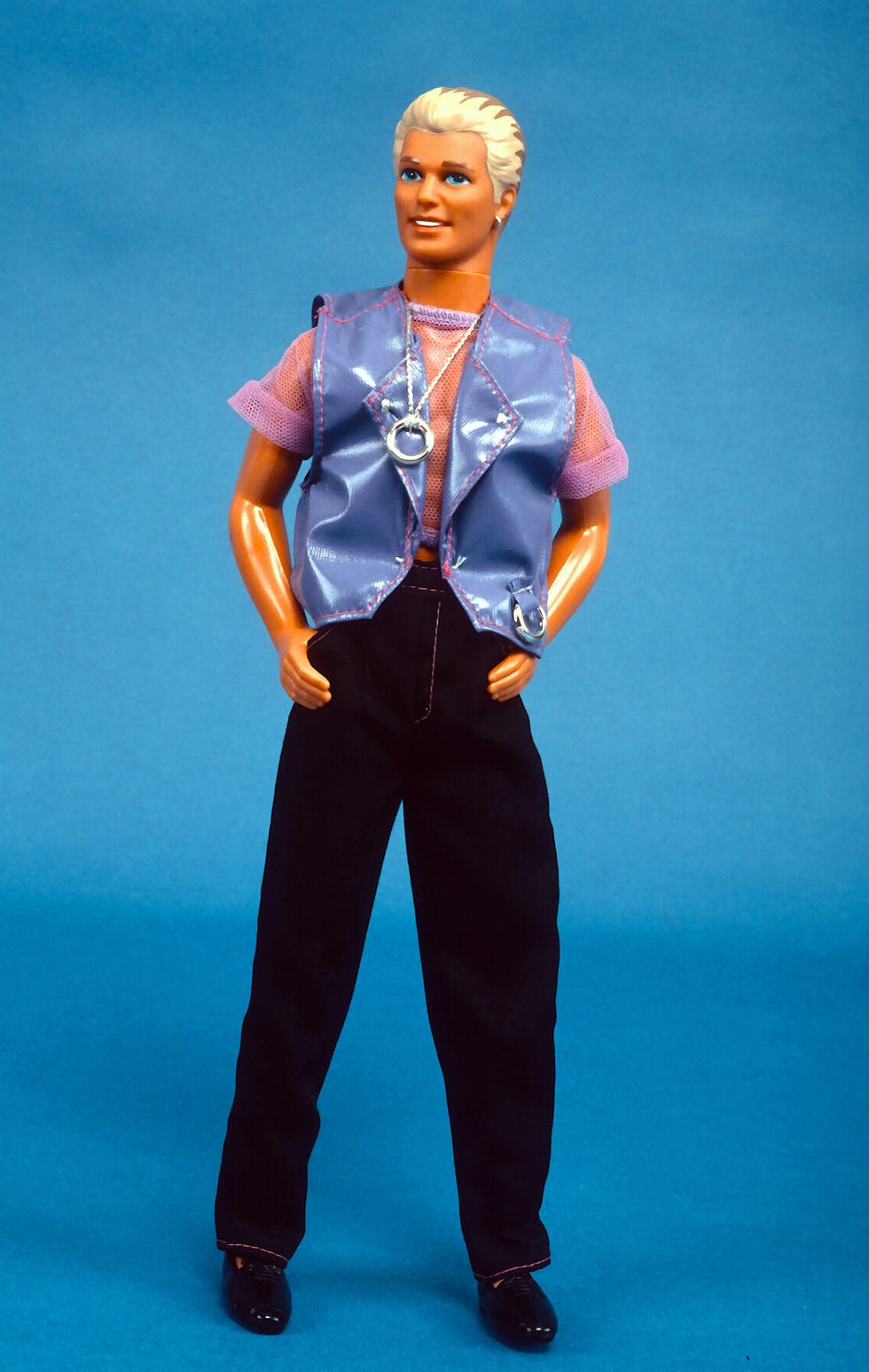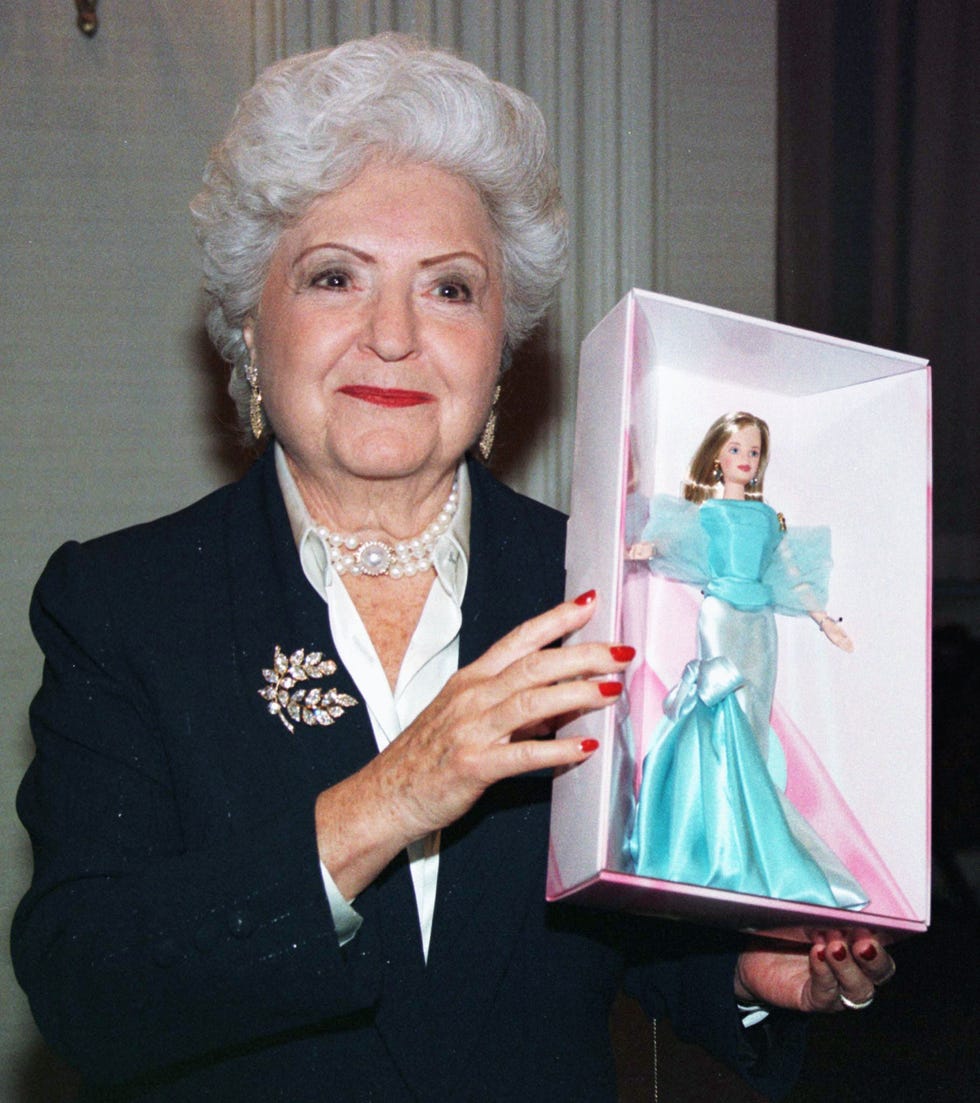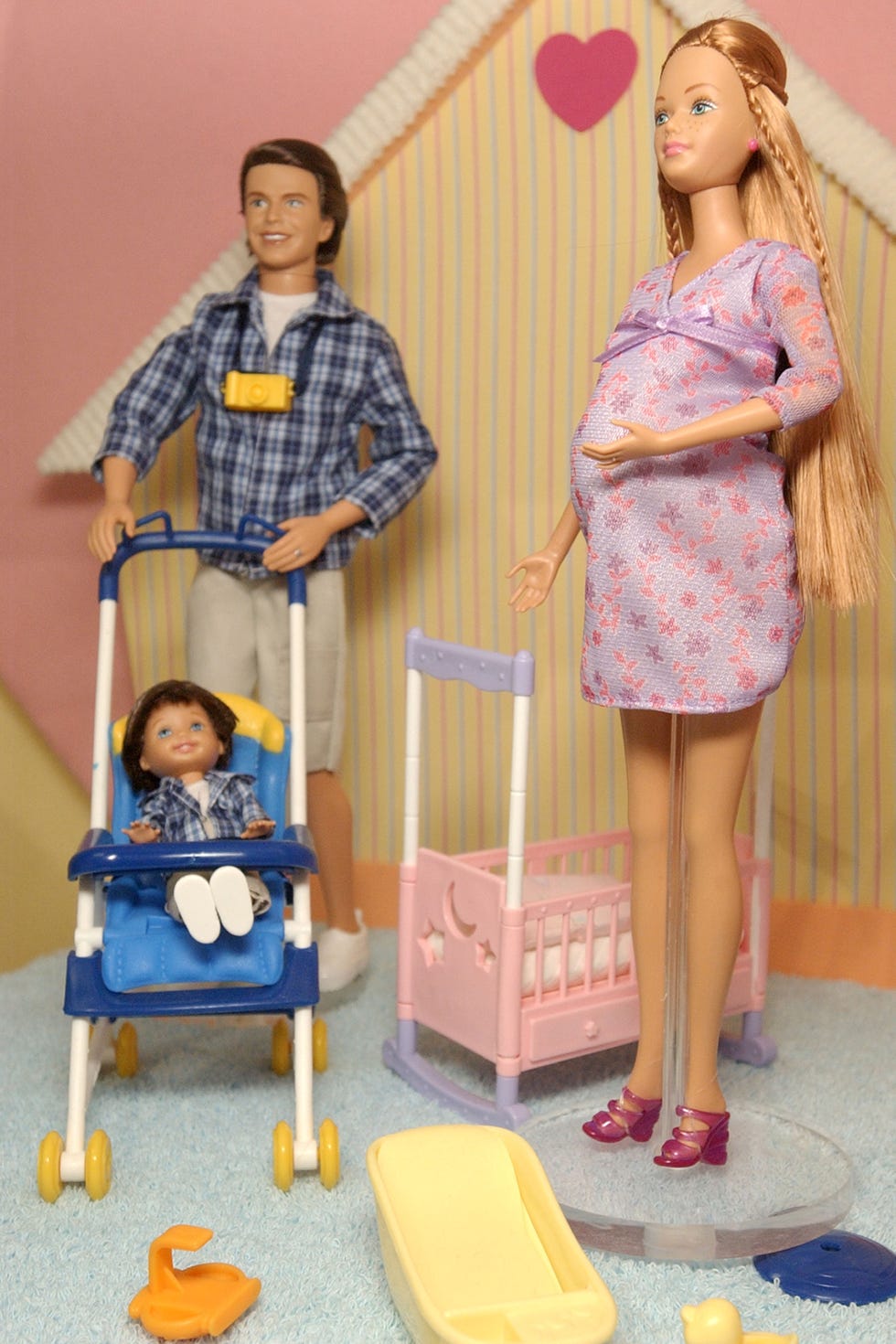All of the Barbie Easter Eggs and References, Ranked
As a film, Barbie succeeds not by shedding the influence of its mega-brand but by interrogating it. Director Greta Gerwig’s box-office triumph is so self-aware that it crawls into the in-joke and makes a home there. As such, one of Barbie’s greatest delights is not only Margot Robbie’s pitch-perfect Stereotypical Barbie, or Ryan Gosling’s crooning as “Just Ken,” but the numerous Easter eggs and meta-references scattered throughout the film—each lining a trail of breadcrumbs that leads not only back to Barbie itself, but to the point of Barbie as an icon of gender politics. Ahead, we rank a handful of the funniest, most creative, and most important Easter eggs we could find in our (many) viewings of the summer’s biggest movie.
16) BAX
As Barbie drives through Barbie Land, we get a glimpse of the world’s airport (though no clues as to where, precisely, these Barbies might be flying). A giant sign outside reads “BAX”—a clear nod to Los Angeles’ famous LAX. Cute, but nothing groundbreaking.
15) The Pegasus Statue
During one of the Barbie Land beach scenes, audiences can catch a glimpse of a statue along the coast. Shaped into the form of a winged horse, it’s a nod to the 2005 animated film Barbie and the Magic of Pegasus. This reference gets bonus points simply for the iconic nature of the movie itself, which more than a few of us zillennials watched until the DVD melted in our hands.
More From ELLE

14) Tanner
At Weird Barbie’s house, we meet a plastic pooping pup named Tanner, based on a real toy of the same name that was recalled in 2007, thanks to its aspiration-inducing pooper scooper. Tanner doesn’t contribute much to the Barbie plot, but he is cute—and a hilarious reminder that even Barbie isn’t too proud to clean up her doggie’s doo doo.
13) Video Girl Barbie
Also on the Island of Misfit Toys—a.k.a., Weird Barbie’s house—we’re introduced to Video Girl Barbie, based on a real toy that kids could use to capture footage using a video camera inside the doll’s body. (The camera lens was in her necklace, while the monitor was on her back.) Make it make sense!
12) Skipper, Tutti, and the Treehouse
Barbie’s little sister, Skipper, makes a quick appearance next door to Barbie’s Dreamhouse, where she lives in a treehouse, itself replicated from the Chelsea doll playset. The littlest sister Skipper shares with Barbie, named Tutti—one of two since-discontinued twin dolls—does not appear on screen, but a restaurant in Barbie Land named Tutti Frutti seems to wink at her existence.
11) The Wizard of Oz
You might notice that, when Barbie drives through Barbie Land in her pink Corvette, she sails past a movie theater playing The Wizard of Oz. Inside the doors to the theater, there’s even a yellow brick road leading to the Emerald City, glistening in the distance. The reference is a bit of foreshadowing for the strange journey of self-discovery Barbie herself is about to embark upon when she enters the Real World.
10) Sugar Daddy Ken
Another of Weird Barbie’s cohort includes Sugar Daddy Ken, the real-life name of a real-life doll so named after his greatest accessory: a West Highland Terrier named Sugar. As a Mattel spokeswoman apparently told the New York Post in 2009, per Women’s Wear Daily, “He’s Sugar’s daddy, as a reference to the dog.” Riiiight. At a whopping $82 per unit, Sugar Daddy Ken wore Trina Turk and Lilly Pulitzer, and was considered reportedly part of the adult collectible spin-off of Barbie and Ken products.
9) Earring Magic Ken
Perhaps the greatest of Weird Barbie’s unorthodox pals is Earring Magic Ken, modeled after the ’90s doll of the same name (one that was later coined, unofficially, “Gay Ken.”) The toy’s introduction prompted an infamous column by sex columnist Dan Savage named “Ken Comes Out,” in which Savage wrote, “Hanging around Ken’s neck, on a metallic silver thread, is what ten out of ten people in the know will tell you at a glance is a cock ring.”
He continued, reporting the response of a Mattel spokesperson: “Mattel Toys, in the person of Lisa McKendall, denies everything. ‘Absolutely not,’ she said. ‘It’s a necklace. It holds charms he can share with Barbie. C’mon, this is a doll designed for little girls, something like that would be entirely inappropriate.’ OK, Lisa, let’s call it a necklace. Queers have been wearing cock rings as necklaces for years.” The fact that Gerwig took the time to read up on this lore and recreate it in the Barbie film? Absolutely remarkable.
8) Ruth Handler’s tax scandal
Barbie doesn’t devote too much time to outlining all the backstory of Barbie creator Ruth Handler, but it doesn’t pass up the opportunity to briefly reference her tax scandal: In 1974, Ruth resigned as president of Mattel and, in 1978, she was charged with tax fraud and false reporting. In the film, actress Rhea Perlman mentions her character’s financial mishaps with a smirk, a hilarious meta-moment—and an illustration of imperfection that well captures the movie’s themes.
7) “The Creation of Adam”
When Stereotypical Barbie first meets her creator, it is within the context of a tiny yellow kitchen deep within Mattel HQ. There, Ruth makes Barbie a cup of tea. And as Robbie told Variety, “There’s a moment when Ruth Handler, the creator of Barbie, gives Barbie a cup of tea and our hands touch like ‘The Creation of Adam’ by Michelangelo, imitating the moment when God gives life to the first man. Greta snuck that in there.” It’s an iconic image, replicated in film and art a million times over, but it’s particularly poignant in a film about the creation of an icon itself.
6) “Sí Se Puede”
In one of the final scenes of the film, Gloria’s (America Ferrera) husband (played by Ferrera’s IRL husband, Ryan Piers Williams), tries to encourage Barbie with some of his beginner-level Spanish. “¡Sí se puede!” he tells her, to which Gloria responds, “That’s a political statement.” (Their daughter Sasha, played by Ariana Greenblatt, rolls her eyes and calls it “appropriation.”)
That line, which translates to “yes, it can be done” or “yes, we can” carries multiple references. On the surface, it’s a wink to the 2002 Disney original film starring Ferrera, Gotta Kick It Up!, in which she and her fellow cheerleaders famously chanted “Sí, se puede” to motivate each other. On a deeper level, it’s a callback to the slogan popularized by the labor activist Dolores Huerta to protest a bill that denied farm workers the right to strike. It became the motto of the United Farm Workers union, which Huerta co-founded with Cesar Chavez, Larry Itliong, and other organizers. Decades later, it even inspired President Obama’s own “Yes, we can” campaign slogan. So, Gloria is right: It is a political statement.
This content is imported from youTube. You may be able to find the same content in another format, or you may be able to find more information, at their web site.
5) 2001: A Space Odyssey
As first revealed in Barbie’s teaser trailer, the film begins with a sequence mimicking the opening scene of Stanley Kubrick’s 2001: A Space Odyssey, in which primates discover the use of tools, i.e. “The Dawn of Man.” Barbie’s scene is a spin on “The Dawn of Woman,” in which little girls discover the use of grown-up dolls and smash their outdated baby dolls to bits in response. It’s a deliciously clever way to begin a film about the outsized influence of a plaything on womanhood.
This content is imported from youTube. You may be able to find the same content in another format, or you may be able to find more information, at their web site.
This content is imported from youTube. You may be able to find the same content in another format, or you may be able to find more information, at their web site.
4) Arched feet
One of Barbie’s signature traits is the shape of her feet: They rest in an eternal arch, perfect for slipping into the high heels that came packaged with so many of her playsets. So when Stereotypical Barbie’s arches hit the floor midway through Barbie, it’s not just a surprise; it’s a shock to the entire social order of Barbie Land. Suddenly, she’s an object of disgust. “Flat feet!” Hari Nef’s Doctor Barbie shrieks when Stereotypical Barbie reveals her latest ailment. The moment is not only a hilarious bit; it’s the ideal encapsulation of how Barbie’s so-called “perfection” is nothing more than a facade.
3) The Matrix
When Barbie ventures to Weird Barbie’s humble abode in pursuit of a solution to her “malfunctions,” Weird Barbie presents her with two options: She can stay in Barbie Land and grow ever-weirder, or she can search the Real World for the child influencing her imperfections. Weird Barbie illustrates this choice with a play on The Matrix’s “red pill or blue pill” scene: In one hand is a pink heel, representing the lie of Barbie Land; in the other is a Birkenstock, representing the truth of the Real World. And honestly, it doesn’t get much more real than a well-worn Birk.
This content is imported from youTube. You may be able to find the same content in another format, or you may be able to find more information, at their web site.
2) Midge
Emerald Fennell plays Barbie’s ostracized neighbor Midge, a pregnant doll discontinued in the early aughts for being “too weird.” (And also for “promoting teen pregnancy”?) Anyway, Midge’s cameo is one of the film’s best—in part because of Fennell’s hysterical ability to pop in and out of scenes with a discomfiting smile. But it’s the ostracizing of motherhood within Barbie Land itself that feels especially poignant. In a supposedly perfect feminist world, why would someone like Midge not only be such a rare sight, but an uncomfortable one?
1) Allan
Michael Cera’s turn as “Ken’s buddy” Allen has quickly become a fan-favorite guest role. (Allan’s even been heralded by Vulture critic Jen Chaney as the “Unsung Hero of Barbie.”) Based on the real Allan doll, whose main selling point was that all of Ken’s clothing and accessories could fit him, Cera’s Allan is desperate to escape Barbie Land so he can get out from under Ken’s shadow. Patriarchy, man—it hurts all of us.
Culture Writer
Lauren Puckett-Pope is a staff culture writer at ELLE, where she primarily covers film, television and books. She was previously an associate editor at ELLE.
Erica Gonzales is the Senior Culture Editor at ELLE.com, where she oversees coverage on TV, movies, music, books, and more. She was previously an editor at HarpersBAZAAR.com. There is a 75 percent chance she’s listening to Lorde right now.





